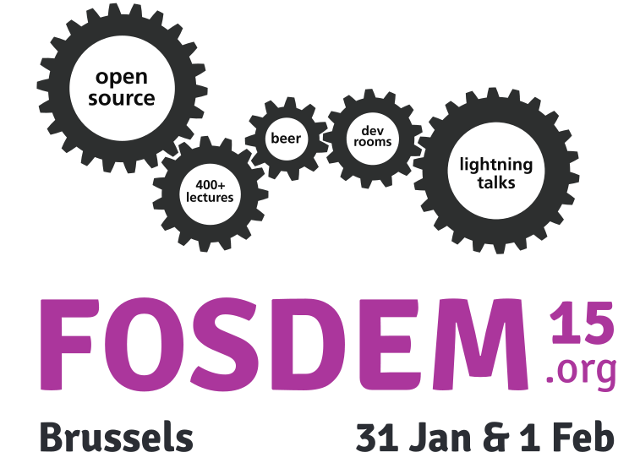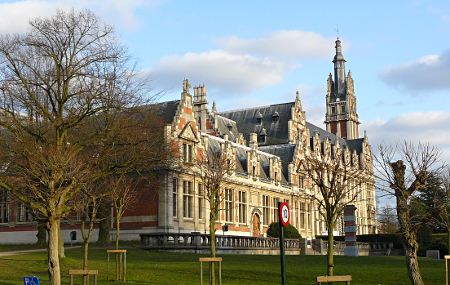This was my first FOSDEM and the first in which there was a track of design. I’ve been very lucky :). As an Open Source designer it represents one of the most important events of the year, not only because of the importance of the FOSDEM in our philosophy but also because of the opportunity to see me surrounded by designers with my own concerns. So let’s started!

THE PLACE: ULB – BRUSSELS
The location was a good choice from my point of view. Well-located buildings and a great environment surrounded the tracks, well organized. The design track took place in a cozy building with common areas where you can chat between talk and talk, and meet new people. As a first-timer FOSDEM was so nice and I could immerse myself in all that good feeling that surrounds the event.
Not much to say about Brussels, it is a great city. Walking along the downtown streets and enjoying the atmosphere. I was very lucky to stop at FOSDEM’s most famous pub called “Delirium” where the atmosphere was great. But as I say, pure luck 😉

OPEN SOURCE DESIGN TRACK
The design track took place on Sunday, the second day of FOSDEM. The organization dedicated a room exclusively to Open Source design even being the first year of it, thanks for that. Although wasn’t enough people to fill the room only with designers, a lot of developers filled it interested in seeing how the design world goes.
The track was made up of ten talks about various topics related to the design, some of them about general terms and others focused on specific aspects. Here you can see the full schedule.
Later I will conclude with my general opinion but first let me talk about three talks in particular:
The Challenges of open mobile design – Michael Demetriou
Michael tells us about how to manage the risk of losing control and design consistency while community participation is encouraged. As a case of study he proposes his work at Glacier UI for Nemomobile. Being humble and accepting proposals meanwhile you manage the design approach in a project that lives exclusively through developer’s free time.
As a demo he brought their Glacier UI in a smartphone and shown us how they had solved the problem I call “menus everywhere” in the interface. Leaving the canvas clean of interactions and showing the menus by swipes.
LibreOffice Design Team – Jan Holešovský
With the quote “What can we do, and how I can participate?” this talk was one of the most interesting for the community. The objective was to show how LibreOffice manage the contributions to the project in design terms.
After showing a few examples of integrated design solutions in the latest release, Jan explained the method they use to manage the visual improvements suggested by the community. This concern to me because the system is similar for Inkscape and Gimp. Everything depends on a group of people who are not necessarily professional designers and you probably need to find someone to develop your idea, even the LibreOffice team could say no.
Every pixel hurts – Pablo Cúbico
This certainly was the best talk because portrays the current state of the Open Source design. Pablo is an experienced designer who has worked with Mozilla and Diaspora among others companies. Now is more located in the UX field. Explaining the UX concept (yes, most developers did not really know what is it) he talked about the status of Open Source design point of view. I’m absolutely agree.
As we know, there is a huge lack of UX / UI in free software projects, so now more than ever, the contribution of the community is important. As the developer world has accepted the collaboration and continue it’s growth, it is important that designers get involved and try to fix the quality gap that separates the free software from the private one.

CONCLUSION
The design community has not many historical precedents of collaboration, but with the new UX and UI design practices, the design become an important element of the software development. There is an opportunity to have open mind and get people involved.
I’m still seeing a lot of difficulties in the process of sharing. It’s very hard to do a quick and effective collaboration as a designer. There are platforms like GitHub, StackOverflow, Codepen … used by developers. We also have to create collaborative communities around similar tools (for example behance, dribbble, …) to enhance free software as designers.
You can not compare the design process with the development one. Designers have to move slowly, creating little pills of work to let the community grow.
Finally, with all these thoughts in mind, my motivation is high than ever. I want to help and try to be part of a community of designers that will make us move forward and contribute with the intention of making free software for a better world.
